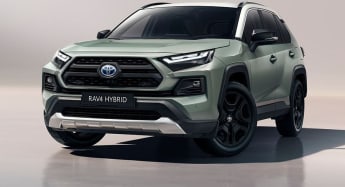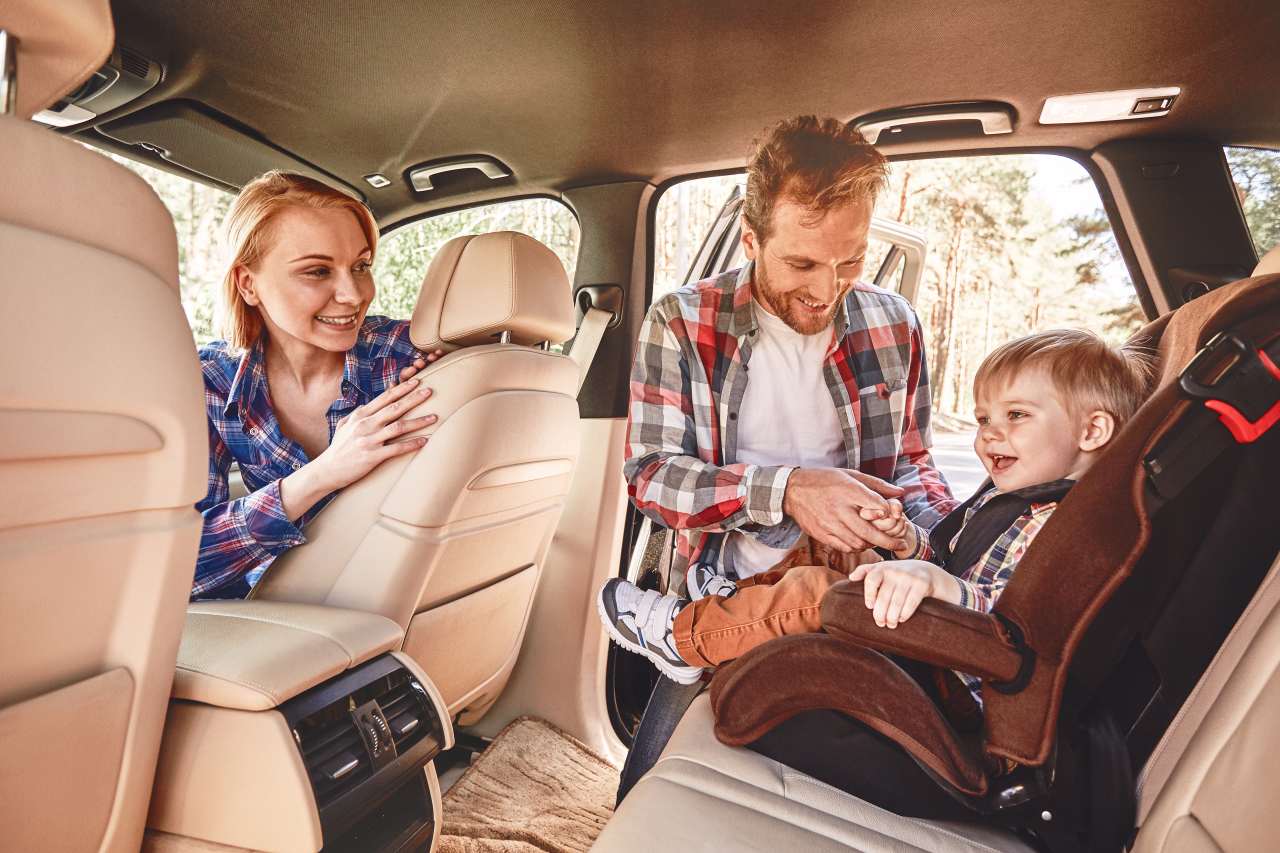The Toyota RAV4 has held the title of being one of Australia’s most popular SUVs for good reason.
It’s comparatively affordable for the market, spacious and easy to drive. I was pretty keen to get in one again because my first car was a 2003 three-door version that I absolutely loved and drove for 10 years thanks to its reliability.
Combined with it's low running costs and hybrid-efficient fuel economy, it's a firm competitor against rivals like the Subaru Forester Hybrid L and MG's HS plug-in hybrid.
My small family of three has been driving the GXL two-wheel drive hybrid for the last week and we’ve found things we really like and… things that remind us that it’s one of the base models.
Toyota RAV4 2023: GXL (2WD) Hybrid
| Engine Type | Inline 4, 2.5L |
|---|---|
| Fuel Type | Unleaded Petrol/Electric |
| Fuel Efficiency | 4.8L/100km (combined) |
| Seating | 5 |
| Price From | $41,910 - $49,280 |
| Safety Rating |
|
Price and features – Does it represent good value for the price? What features does it come with?
There are five grades in the RAV4 line-up, from the entry-level GX to the range-topping Edge. Our GXL is second from the base model and is $44,100, before on road costs.
That puts it on par with its nearest competitor, the Subaru Forester Hybrid L but it is cheaper than the MG HS plug-in hybrid which comes in at $46,990.
.jpg)
In the hybrid market where the dollar signs can creep up, the RAV4’s price tag is fairly respectable. You can also save yourself about $4K by getting the GX model, if you’re not fussed over having privacy glass, larger wheels or a wireless charging pad. Bonus – the GX has the same engine!
The features list is pretty good and you’ll find the standard mod cons like wireless Apple CarPlay and Android Auto, dual-zone climate control, Bluetooth connectivity and satellite navigation, along with a wireless charging pad for your phone.
.jpg)
Design – Is there anything interesting about its design?
The RAV4's shape hasn't seen a facelift but it continues to have a handsome roadside presence with the sharp angular lights that jut out at the rear, squared-off wheel arches and proportions that make it earn its SUV tag.
The interior is... Toyota. Easy to get used to because all the buttons and controls are where you expect them to be.
.jpg)
Don't expect to be wowed by it, but it's pleasant to look at and there's a sturdiness to the harder plastics in the dash and doors that seems to work well here but could look cheap in another car.
The doors have a satisfying weight to them and the cloth seats have an interesting fabric design that's carried through the rest of the car in little accents, which ties the look together. All seat adjustments are manual and unfortunately, there is no lumbar support!

Practicality – How practical is its space and tech inside?
Up front the interior is downright roomy and backseat passengers enjoy loads of headroom, although while it's good for my 168cm (5ft6) height, taller occupants may not love the back seat legroom.
The front row gets the most amenities and tech. The 8.0-inch touchscreen multimedia system is a bit small for the market now but fairly easy to use, once you get used to it.
Front occupants are spoiled with two USB-C ports, a 12-volt port and a wireless charging pad.
The new GXL also comes with wireless Apple CarPlay and Android Auto, built-in satellite navigation and Bluetooth connectivity.
.jpg)
The front row enjoys the most storage space with two cupholders, dedicated phone tray, drink bottle holders in the storage bins in both doors and a couple of cute cubbies – like the shelf in front of the passenger and a little wallet nook on the driver’s side.
Backseat passengers feel a bit forgotten, I’m afraid, and it’s here the model position makes itself known.
Storage and amenities are a little lean but I like the directional air vents, a map pocket, two cupholders and drink bottle holders plus two USB-A ports. But that’s it.
.jpg)
The boot space is on the smaller side for this size SUV with 542L of capacity but the level load space makes it easy to slide gear in and out.
There’s another 12-volt port back there with a handy storage cubby on the side for small stuff, and a retractable cargo blind.
The floor is reversible, so if you want a hardier plastic rather than the carpet, you just flip it over (great if you have pets or your kids do water sports).
I did notice the lack of powered tailgate this week with my errands but the lid isn’t too heavy to open or close. It’s just annoying when you have your hands full!
Under the bonnet – What are the key stats for its engine and transmission?
Interestingly, this shares the same engine across its variants. The 2.5L, four-cylinder hybrid powertrain has a maximum output of 160kW and 221Nm of torque.
I found the engine to be powerful enough to overtake when necessary but you do feel like there’s not heaps in reserve when you put your foot down.
The CVT auto transmission is a little clunky at lower speeds or when you’re trying to ‘zip’ around town, but smooths out on the open road. That clunky-ness is compounded by the noticeable switch from EV to normal engine mode.
.jpg)
Efficiency – What is its fuel consumption? What is its driving range?
Even though the interior is a bit basic, the fuel economy is outstanding! The official combined cycle economy figure is 4.7L/100km.
Real world testing saw my figure at 5.5L after a mix of open-road and urban driving this week. With the rising cost of fuel, this is a winning feature for such a large SUV.
The RAV4 has a 55L fuel tank and based on the official combined fuel figure, you have an approximate driving range of up to 1170km.
.jpg)
Driving – What's it like to drive?
The hybrid powertrain doesn’t always make the driving feel super refined. It’s pleasant enough that you’ll still enjoy it but it can be a little unsure of itself at lower speeds when it switches between the electric motor and petrol engine. All in all, it’s a very serviceable car to get you from A to B.
The GXL handles bends well without much roll and the steering is quite firm, making you feel like you have a lot of control.
The ride comfort is good with the suspension being forgiving but not floaty. Even back seat passengers will be comfy.
.jpg)
While it absorbs the bumps well, you do hear them. There’s often a big ‘ker-clunk’ sound when you go over a speed bump. Otherwise, the cabin is fairly quiet.
The RAV4 is built for most environments and city dwellers will enjoy its 4600mm length and 1855mm width when it comes time to park.
It's low for an SUV at 1685mm tall and the 11m turning circle makes manoeuvring it a delight. However, the reversing camera isn’t the best I’ve seen and really threw me off spatially. So much so, that I ended up not using it much this week.
Safety – What safety equipment is fitted? What is its safety rating?
The safety list is extensive with the following being standard features: LED daytime running lights, lane departure alert, lane keeping aid, blind-spot monitoring, rear cross-traffic alert (always good to have), reversing camera plus front and rear parking sensors.
The ‘check rear occupant’ alert and, forward collision warning are always great to have on a family vehicle.
It has auto emergency braking with car, pedestrian and cyclist detection and junction assist but it’s only operational from 10-80 km/h. You usually see that operation start at 5.0km/h and that means you’re going 5.0km/h faster before it kicks in.
.jpg)
The RAV4 was awarded a maximum five-star ANCAP safety rating in 2019, which is a little while ago now and only has seven airbags which includes a drivers’ knee airbag. It’s missing the newer front centre airbag, though.
There are ISOFIX child seat mounts on the outboard rear seat positions and three top tether anchor points but the seat is a bit too narrow to comfortably fit three seats side by side.
Admittedly, my harnessed booster is monster-sized, you might have luck with skinnier seats. There’s just enough room for a 0-4 rearward facing child seat to be installed behind my driving position.
_0.jpg)
Ownership – What warranty is offered? What are its service intervals? What are its running costs?
The ongoing running costs are the winning feature for me. This comes with a five year/unlimited km warranty, which is standard for the class.
There is a capped-priced servicing plan for up to five-years or 75,000km, whichever comes first. The services are darn cheap at $260 each and one of the best prices I’ve seen for this sized SUV.
.jpg)
Servicing intervals are also reasonable at every 12 months or every 15,000km, whichever occurs first.
If you’re still unsure on whether the RAV4 will ‘fit’ into your life, Toyota offers a ‘try before you buy’ service. It’s still a paid service through KINTO (a car share and rental business operated by Toyota Finance) but you can essentially rent one for up to a year to see if it will suit your family.
Verdict
There are some things that remind you that the RAV4 GXL 2WD Hybrid is one of the base models, like the lack of creature comfort features but it’s saved by fantastic ongoing costs with the servicing and fuel economy. And while the interior is a bit basic for my taste, it’s perfectly serviceable and still looks very nice. I would have liked the tech to be a bit better but it was easy to drive and my kid was relatively happy in the back seat. So, it gets a 7.5/10 from us.
Pricing Guides



.jpg)
.jpg)
.jpg)
.jpg)

_0.jpg)





































.png)








.png)




.jpg)




